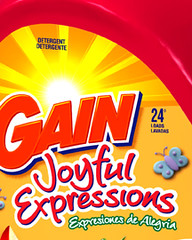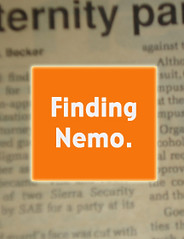Brands are fragile things, like snowmen in spring. That’s what Julie Roehm learned with Wal-Mart, a case study we concluded back in August. And now it seems Steve Biegel, former creative director for Dentsu America, is about to learn the same thing.
Effie, Clio, and David Ogilvy Award-winning ad veteran Biegel filed a lawsuit against his former employer that has the advertising industry shaking its head, not its fist.
He alleges that Toyo Shigeta, CEO of Dentsu Holdings USA, took and shared upskirt shots of women (including Maria Sharapova; see Adrants), forced him to visit a Prague brothel, and required workers to have sex with prostitutes. Advertising Age has published the entire lawsuit online. It makes the Roehm scandal look rated G for gratuitous.
“If Steve Biegel had exhibited as much creativity and effort when he worked here as he has on manufacturing this frivolous complaint, the company would not have fired him,” Dentsu America CEO Tim Andree told Adweek.
Dentsu has also vowed to file a countersuit, primarily alleging libel because a lawsuit draft was sent to its clients. (If Biegel did send Dentsu clients drafts, he may be forced to prove every point true to avoid libel.)
As with most legal wrangling, some of the non-court communication hints at the truth. Did the events take place? Probably. Was Biegel horrified and sexually harassed? Only Biegel really knows, but his credibility is in question because based on the lawsuit and subsequent communication.
It seems all too likely that he was more horrified about losing his job than some of the events that seemed to have occurred as much as three years prior. It also doesn’t help that Biegel did not find the alibi or ally he thought he might with his friend Scott Weitz, a staffer with Driver Media who was present during the Prague brothel incident. According Adweek, Weitz said that Biegel never complained about Shigeta encouraging or forcing him to engage in such behavior and that Biegel went into a private room with a prostitute. (Eesh! To think that if Hostel came out one year earlier, all this may have been avoided.)
To be clear, sexual harassment in the workplace is wrong. However, advertising is probably not the right career path for those who shy away from an industry that claims “sex sells.” At least, it’s not really suited for someone who claims to be as horrified as Biegel now says he is (not that our industry requires bath houses or brothels, of course).
Still, what employees need to know, I suppose, is that just because your employer tells you to do something, it doesn’t mean you have to do it. Um, you can make your feelings known immediately, file a complaint while you’re still employed, or walk out the front door before you’re fired. Heck, I’ve even terminated an account or two after becoming uncomfortable with advances that persisted after warnings.
Just say NO!
But, then again, I’m not writing from a legal perspective (because I’m not an attorney). I’m writing from a communication perspective that suggests: it’s probably best not to be the freewheeling creative ad guy for years and then attempt to play bashful family man shortly after you are terminated.
The less than $1 million lawsuit and potential damage from a libel countersuit (not to mention potential personal brand and credibility erosion), is not worth it. Or, in other words, if Biegel really wanted to win this case as opposed to shooting for a settlement, he would have employed the most basic premise of crisis communication and “talked about it as soon as possible.” That would have been three years ago.
Still, this lawsuit comes at a bad time for Denstu. It just recently made a push toward taking a more visible foothold in the international marketplace. Although it is one of the largest advertising companies in the world, only eight percent of its revenue is generated outside Japan. (Japan is the second largest advertising market in the world.) Its clients have included Canon, Toyota, HarperCollins Publications, and Toshiba America, among others.
As a side note, Dentsu America’s mission statement is to “influence by telling the truth in new ways.” And how. Case study? I'm not sure yet.

Effie, Clio, and David Ogilvy Award-winning ad veteran Biegel filed a lawsuit against his former employer that has the advertising industry shaking its head, not its fist.
He alleges that Toyo Shigeta, CEO of Dentsu Holdings USA, took and shared upskirt shots of women (including Maria Sharapova; see Adrants), forced him to visit a Prague brothel, and required workers to have sex with prostitutes. Advertising Age has published the entire lawsuit online. It makes the Roehm scandal look rated G for gratuitous.
“If Steve Biegel had exhibited as much creativity and effort when he worked here as he has on manufacturing this frivolous complaint, the company would not have fired him,” Dentsu America CEO Tim Andree told Adweek.
Dentsu has also vowed to file a countersuit, primarily alleging libel because a lawsuit draft was sent to its clients. (If Biegel did send Dentsu clients drafts, he may be forced to prove every point true to avoid libel.)
As with most legal wrangling, some of the non-court communication hints at the truth. Did the events take place? Probably. Was Biegel horrified and sexually harassed? Only Biegel really knows, but his credibility is in question because based on the lawsuit and subsequent communication.
It seems all too likely that he was more horrified about losing his job than some of the events that seemed to have occurred as much as three years prior. It also doesn’t help that Biegel did not find the alibi or ally he thought he might with his friend Scott Weitz, a staffer with Driver Media who was present during the Prague brothel incident. According Adweek, Weitz said that Biegel never complained about Shigeta encouraging or forcing him to engage in such behavior and that Biegel went into a private room with a prostitute. (Eesh! To think that if Hostel came out one year earlier, all this may have been avoided.)
To be clear, sexual harassment in the workplace is wrong. However, advertising is probably not the right career path for those who shy away from an industry that claims “sex sells.” At least, it’s not really suited for someone who claims to be as horrified as Biegel now says he is (not that our industry requires bath houses or brothels, of course).
Still, what employees need to know, I suppose, is that just because your employer tells you to do something, it doesn’t mean you have to do it. Um, you can make your feelings known immediately, file a complaint while you’re still employed, or walk out the front door before you’re fired. Heck, I’ve even terminated an account or two after becoming uncomfortable with advances that persisted after warnings.
Just say NO!
But, then again, I’m not writing from a legal perspective (because I’m not an attorney). I’m writing from a communication perspective that suggests: it’s probably best not to be the freewheeling creative ad guy for years and then attempt to play bashful family man shortly after you are terminated.
The less than $1 million lawsuit and potential damage from a libel countersuit (not to mention potential personal brand and credibility erosion), is not worth it. Or, in other words, if Biegel really wanted to win this case as opposed to shooting for a settlement, he would have employed the most basic premise of crisis communication and “talked about it as soon as possible.” That would have been three years ago.
Still, this lawsuit comes at a bad time for Denstu. It just recently made a push toward taking a more visible foothold in the international marketplace. Although it is one of the largest advertising companies in the world, only eight percent of its revenue is generated outside Japan. (Japan is the second largest advertising market in the world.) Its clients have included Canon, Toyota, HarperCollins Publications, and Toshiba America, among others.
As a side note, Dentsu America’s mission statement is to “influence by telling the truth in new ways.” And how. Case study? I'm not sure yet.






















